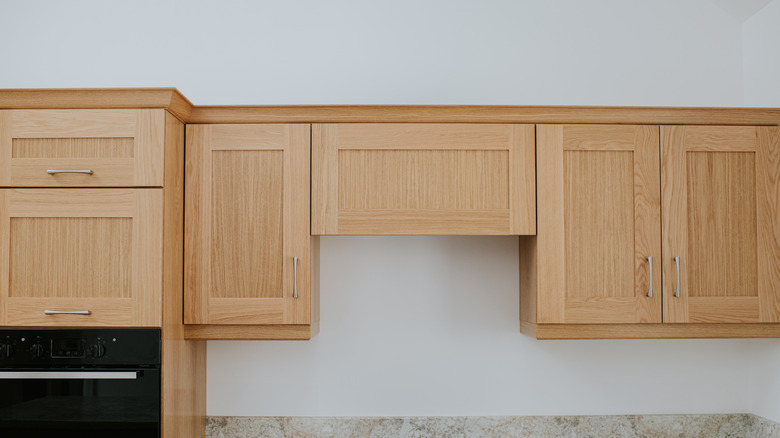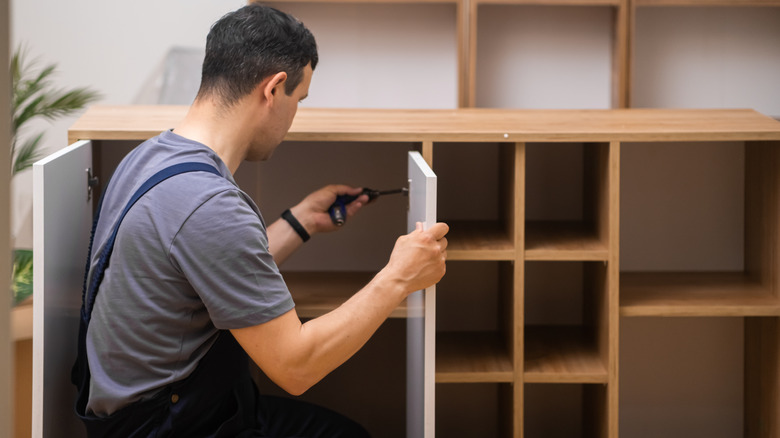The Tools You Need To Get Started Making Custom Cabinets
Building custom cabinets might sound like a project only meant for professionals, but with the right tools, it's absolutely doable. Whether renovating your kitchen or adding storage space, custom cabinets can make your home stand out. But before diving in, you'll need to ensure you're properly equipped. Trying to cut wood with a butter knife won't get you very far. To ensure you're set up for success, you'll need a circular saw, a Kreg shelf pin jig, a drill, and pocket hole tools.
The circular saw is your best friend when it comes to cutting large sheets of plywood or hardwood. Without it, you'll be stuck with either tiny pieces or oversized planks, which isn't ideal for cabinets. When using the tool, be sure to measure twice and cut once because, well, wood doesn't grow back. The Kreg shelf pin jig is another lifesaver. This nifty tool helps you drill perfectly spaced holes to insert adjustable shelves later.
The other two game-changers are the drill and pocket hole jig. The drill is just about the most versatile tool in your kit. You'll use it for everything from driving screws to drilling pilot holes. Pilot holes are super important because they prevent your wood from splitting when you screw pieces together. A cordless drill is ideal, so you don't have to fuss with cords while you work. The pocket hole jig will be helpful when it's time to make joints, especially for corners where glue just won't cut it. Pocket holes allow you to screw pieces of wood together at an angle, giving your cabinets the stability they need to hold up over time.
Follow these tips when making custom cabinets
Before you cut your first piece of wood or drill your first hole, ensure you have a plan. Take the time to measure the space where your cabinets will go, decide how many shelves or drawers you need, and sketch out a design. This step helps you visualize the finished product and catch any potential issues before you begin. Also, consider the materials you'll use. Will you be working with plywood, hardwood, or MDF? Different materials have different strengths and costs; your plan should account for these.
If you're new to woodworking, start with a small project. Jumping straight into a full kitchen cabinet set can be overwhelming. Instead, start with a smaller cabinet or even just a set of shelves. This will help you get familiar with the tools and techniques without feeling like you're in over your head. Once you've mastered the basics on a smaller scale, you can confidently move on to bigger projects. For instance, if you've never worked with a pocket hole or shelf pin jig before, do a few practice runs on scrap wood.
After you've built your cabinets, you'll need to sand them down to smooth out any rough edges or surfaces. Use 120-grit sandpaper to get a smooth finish, and don't rush through it. Sanding helps eliminate any rough edges or splinters that could ruin the final product's look. Once you're done sanding, apply a finish to protect the wood. Whether you choose paint, stain or varnish, finishing takes your cabinets from looking homemade to high-end.

